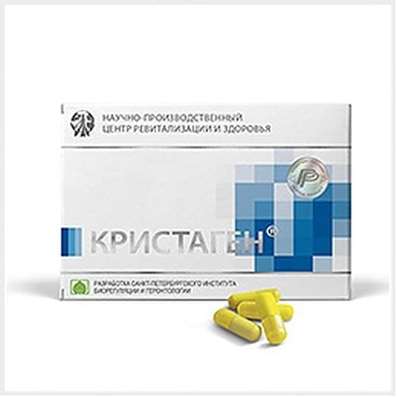Sleeping Pills
28 Feb 2018
Sleeping Pills - a group of psychoactive drugs used to facilitate the onset of sleep and ensure its sufficient duration, as well as during anesthesia. At present, the classification of ATS does not distinguish such a separate pharmacological group.
The desire to provide a good sleep has long led people to try to use certain products and pure substances, like sleeping pills. Another Assyrians around 2000 BC. e. used preparations of belladonna for sleep improvement. The Egyptians used opium oil in 1550 BC. e.

For a very long time, the inhibitory effect of ethanol and alcoholic beverages has been noticed, after a short period of excitation of the nervous system leading to its inhibition. High doses of alcoholic beverages Indian doctor Charaka used already for 1000 years BC. e. as a means for general anesthesia.
In Germany in the XIX century, inhalation anesthesia was invented with a mixture of opium, dope, cannabis, aconite, mandrake and other narcotic and toxic substances.
Today, for this purpose, medicinal preparations belonging to various pharmacological groups (tranquilizers, sedatives, many antihistamines, sodium oxybutyrate, clonidine, etc.) are used. Many medications (luminal, veranal, barbamil, nitrazepam, etc.) can reduce the level of excitation of the nervous system, providing a more or less satisfactory sleep.
Application
The modern requirements for safe and effective drugs bring to the fore the following properties of hypnotics:
● formation of normal physiological sleep;
● safety for different groups of people, absence of memory disorders and other side effects;
● Lack of addiction, psychological dependence.
Since "ideal" drugs have not been found, the use of some "traditional" hypnotics continues, including a number of barbiturates (barbituric acid derivatives, compounds formed by condensation of substituted malonic acid esters and urea). If condensation is used instead of urea to take thiourea, we get thiobarbiturates. The most famous barbiturates include phenobarbital, then amobarbital and thiopental, or pentotal (thiobarbiturate), used intravenously for anesthesia.
Modern hypnotic drugs benzodiazepine series (nitrazepam, etc.) have some advantages over barbiturates. However, by the nature of the sleep caused and by side effects, they do not fully meet the physiological requirements.
Recently, from the nomenclature of drugs, carbamal, barbamyl, cyclobarbital, barbital, barbital sodium, ethaminal sodium have been excluded, chloral hydrate and chlorobutanol hydrate have been stopped as a hypnotic.
Classification
Drugs that have a hypnotic activity are classified based on the principle of their action and chemical structure:
● GABA (benzodiazepine) receptor agonists: Benzodiazepines: Nitrazepam, Lorazepam, NosePam, Temazepam, Diazepam, Phenazepam, Flurozepam;
● Preparations of different chemical structure: Zolpidem, Zopiclone, Zaleplon.
Melatonin receptor agonists: Ramelteon, Tasimelteon.
Antagonists of orexin receptors: Suvorexant;
● Sleeping pills with a narcotic effect type: Heterocyclic compounds, barbiturates: Phenobarbital, Sodium ethanamine;
● Aliphatic compounds: chloral hydrate;
● Individual preparations of other groups: H1 blockers of histamine receptors: Dimedrol, Doxylamine;
● Means for anesthesia: sodium oxybutyrate;
● Preparations of the hormone epiphysis melatonin.
Sleeping pills are divided into three classes. Sleeping pills of the first class (generation) are barbiturates, antihistamines and drugs containing bromine (brominated, for example). Barbiturates interact with barbiturate receptors located on chemically-dependent ion channels for chloride ions, and the neurotransmitter for these channels is GABA. Barbiturates interact with these receptors, which leads to an increase in the sensitivity of chemically-dependent channels to GABA and leads to an increase in the opening of ion channels for chloride ions - the nerve cell polarizes and loses its activity. The action of barbiturates, however, is not selective, and they cause not only a sedative-hypnotic effect, but also muscle relaxation, anticonvulsant and anxiolytic action at the entire dose range. Barbiturates vary widely in duration of action. Sleep caused by barbiturates is different from the natural. Antihistamines block the histamine H1 receptors. Histamine is one of the key neurotransmitters of wakefulness, and the blockade of histamine receptors, respectively, leads to a sedative effect. Antihistamines, as well as barbiturates, break the architecture of sleep. Second-generation sleeping pills are represented by numerous benzodiazepine derivatives. If barbiturates cause an increase in the opening time of chemically-dependent channels, then benzodiazepines increase the frequency of opening.
Groups of sleeping pills
● Bromides
● Aldehydes
● Barbiturates (more than 2500 derivatives). Cyclobarbital is one of the active components of the preparation Reladorm (the second component is diazepam);
● Phenobarbital is part of combined sedatives (Corvalol, Valocordin).
● Piperidinodiones (glutethimide (noxidone, doridene)) Hinazolines (methaqualone, etc.)
● Benzodiazepines - a group of drugs with a pronounced hypnotic component in the spectrum of action.
● Chlordiazepoxide (Librium), brothisolam, midazolam, triazolam, nitrazepam, oxazepam, temazepam, flunitrazepam, flurazepam, phenazepamEthanolamines (Doxylamine). H1-histamine receptor antagonists cause M-cholinoblocking effect.
● Cyclopyrrolones (Zopiclone) Imidazopyridines. Selective GABA complex receptor blockers (Zolpidem) Pyrazolopyrimidines (Zaleplon) Alcohol (alcohol) in some countries is sometimes still recommended for use as a sleeping pill, but its effectiveness is low.
Modern preparations
The drugs of receptor action developed at the end of the 20th century differ somewhat, mainly by the frequency and spectrum of side effects, and also by their cost. The higher the selectivity of the drug, the closer its properties to the properties of the "ideal" hypnotic, and the less pronounced unwanted side effects.
Of the latest developments, we note new classes of hypnotics - cyclopyrrolone derivatives, for example, zopiclone (imovan), imidazopyridine derivatives (zolpidem), pyrazolopyrimidine derivatives (zaleplon).
● Bromisovaliun
● Gemineurinum (Hemineurinum)
● Piklodorm
● Zolpidem
● Zaleplon
● Methaqualonum
● Phenobarbitalum
● Flunitrazepam (Flunitrazepam)
● Nitrazepam (Eunoctinum, radedorm)
Other means of regulating sleep
● Electrosleep
● Suggestion and autosuggestion
● Magnesium preparations
The sleep caused by barbiturates is significantly different in structure from the natural. The main thing is changing the ratio of the phases of fast and slow sleep. Because of this, patients experience intermittent sleep, an abundance of dreams, sometimes nightmares. After sleep, there are drowsiness, weakness, nystagmus and other side effects. With the repeated use of barbiturates, it is possible to develop psychological and even physical dependence, similarly to narcotic "breaking".
The use of hypnotics should be performed only by a specialist, after he determines the cause of insomnia, will identify the presence of contraindications to these or other drugs and will make a conclusion about the general condition of the patient.
#psychiatry #psychopharmacology #sleeping pills #psychoactivedevices #hypnotics

 Cart
Cart





